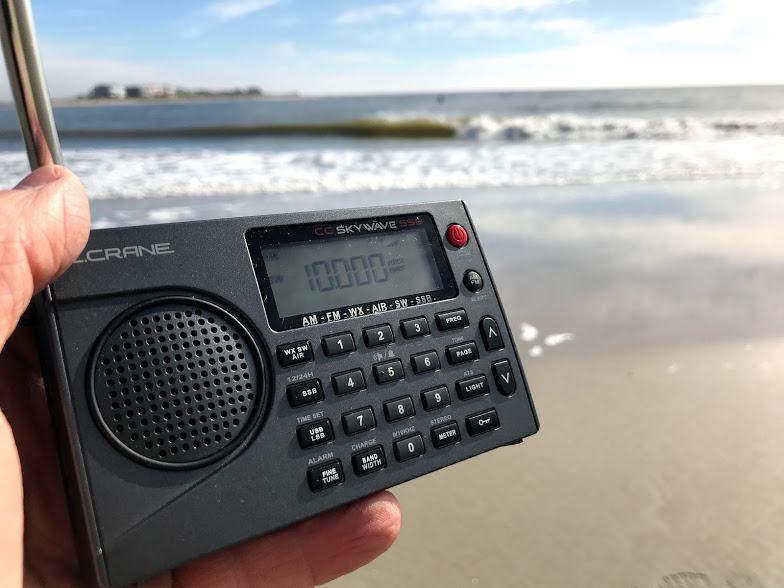 Many thanks to SWLing Post contributor, Kris Partridge, for sharing the following story:
Many thanks to SWLing Post contributor, Kris Partridge, for sharing the following story:
Crowd Science: How does my radio work?
How is a small budget pocket radio able to recreate all the atmosphere and sounds of a football match? CrowdScience listener Andy wants to know about the science enabling his radio listening, so presenter CrowdScience Geoff Marsh sets off – microphone in hand – to follow the journey of sound on the radio.
Starting with the microphone, Geoff learns how acoustic energy is converted into electrical signals. Then BBC World Service presenter Gareth takes Geoff to a little-known room in the BBC called the Radio Shack. Gareth demonstrates how these electrical signals are attached to radio waves before being sent over the airwaves and they take a radio kit apart to understand how these waves are received and converted back into sound waves.
Geoff talks to a speech and hearing specialist who, through the use of auditory illusions, shows Geoff that our brains are often filling in the gaps of lower quality audio.
Finally, Geoff visits an acoustic lab at Salford University where he hears a demonstration of ‘object based audio’. This technology could enable us to create our own bespoke mix of dramas and sports, such as heightening the commentary sound or choosing to hear just the crowd, just by using the everyday speakers many have lying around them, such as mobile phones.
Tune in and join us!
Presented by Geoff Marsh
Produced by Melanie Brown

Peter,
I made one, it was only every used for medium frequency 9.53 – 1.609 MHz
Since the sound direction is controlled by the phase differences between the I and Q signals, not only will multi-path reflections from the ionosphere will not only cause the sound to vary in volume it will also wander from left to right. That is why it was never used for HF broadcasting.
The BBC has outsourced their transmitters so they didn’t interview a transmitter engineer. The engineer would have sorted out their confusion about the frequency of transmission mentioned below.
Their example of how a receiver works, is for medium frequency AM only, yet they talk of worldwide coverage which requires high frequency transmission. The ferrite rods in radios only work on medium and sometimes low frequency depending on the mix of ferrites. Ferrite rods do not work at high frequency and above.
Object based audio has been used in MP4 audio compression for a considerable period and is used in newer audio compression algorithms such as xHE AAC. The cinema industry is using object based audio to produce 22 channel audio in cinemas. The objective of this system is to take a short sample of audio and label it and define it’s location in a 3 dimensional space using metadata. The reproducing system will switch on the speaker closest to that direction, for that sample. This all happens quickly so multiple objects can be heard simultaneously.
Lastly the link has stereo sound, which is not possible on high or medium frequency which use AM. However if Digital Radio Mondiale is used on those frequency bands the stereo is good.
Never heard of Motorola C-Quam AM stereo? 😉
C-QUAM stereo is absolutely amazing over medium wave, some Italian stations have appeared using it and it’s amazing to listen to!
For shortwave, almost no transmitter is capable of C-QUAM Stereo 🙁
TIAMS and my station, RNEI, have been broadcasting in Comb Stereo, a stereo-over-mono technology, for over a year now, weekly shows on WRMI’s normal mono transmitters! It needs a software decoder but the system is entirely analogue and works over any mono medium so stereo is certainly possible in many ways over MW and HF 😀